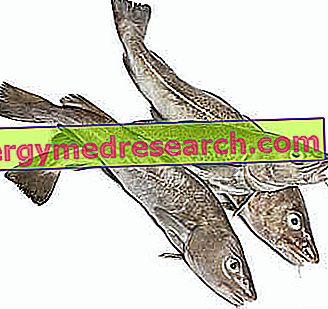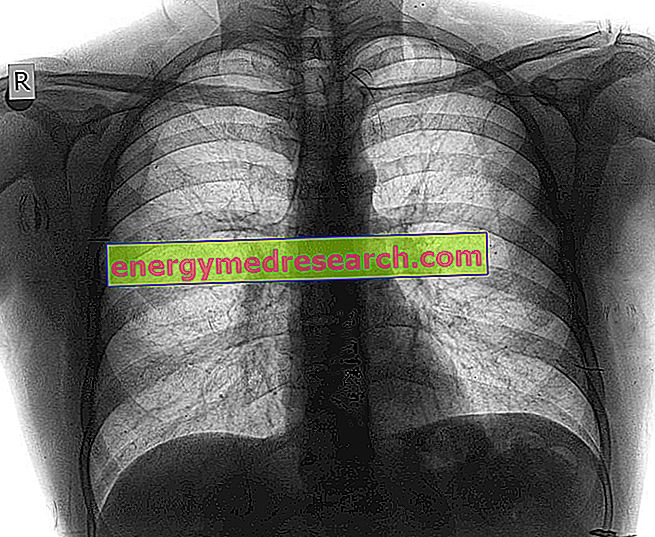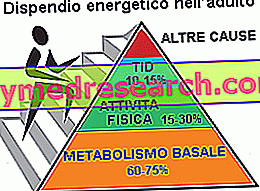What is cod?
Cod proper (in English "Atlantic cod" - " Atlantic cod ") is a bony fish belonging to the genus Gadus, family Gadidae. The binomial nomenclature of Atlantic cod is Gadus morhua .
Description

The largest ever caught was 1.8 meters and weighed 96 kg; the average size is 60 cm for 40 kg.
Atlantic cod can live 25 years and reach sexual maturity between two and four years, even if what populates the north-east can take up to eight years to reproduce.
The color of the fish is brown or green, spotted on the dorsal side and silver on the belly. The lateral line (sensory organ) is clearly visible.
Biology
Absent in the Mediterranean, the G. morhua is a sea creature that populates the cold, deep and open waters of the North Atlantic Ocean, where it is fished in large quantities. The main producing nations are Norway, Iceland and the Canadian island of Terranova.
The cod live in shoals, are voracious of other fish and approach the coasts only in the reproductive period.
Once very abundant, today the population of Atlantic cod is worryingly diminishing. Since the 1990s there has been a decrease of 95%, a loss that has not been recovered even with the cessation of fishing.
The absence of this apical predator has caused an excessive tropism of its preys in many maritime areas. Many other cod-catching areas still remain at risk. Suffice it to say that some northern areas of the ocean have already been abandoned by fishing fleets due to the almost total disappearance of the species.
Atlantic cod is labeled as "vulnerable" in the IUCN Red List (Red List of Threatened Species).

Atlantic cod
Species similar to the Atlantic Cod
In addition to the various species of Gadus, other fish belonging to different genera are commonly called "cod": Merluccius, Pseudophycis, Trisopterus, Pollachius, Theragra and Aulopus .
Let's see the most significant ones.
Pacific Ocean cod
In the Pacific Ocean lives another type of cod, similar to the Atlantic but smaller and with the body covered with white patches.
Saithe cod
Very famous for its meat, the Pollachius virens (also known as black cod) reaches a medium size (it is short but very stocky), it lives at great depths in the cold northern seas and stands out - from most of the cod - for the fatness of the its meats.
Imperial cod
Imperial cod ( Aulopus filamentosus ), also present in the Mediterranean, has a body about 40 cm long with dark transverse bands.
Hake
The hake (Genus Merluccius, a merluccius species) is a fish belonging to the same family as the Atlantic cod. Contrary to the latter, M. merluccius seems widespread throughout the Mediterranean, in the Baltic and in the Eastern Atlantic. It has very fine and delicate meats, which are generally steamed. Note : some know it by the name of fish pier.
Whiting
Belonging to the genus Merlangius, a merlangus species, whiting is considered a very close relative of hake and other cod. Spread mainly in the North Atlantic Ocean, in the North Sea, in the Black Sea, in the Baltic Sea, in the Mediterranean and more precisely in the Upper Adriatic, it hardly exceeds 70 cm in length.
From the very lean and precious (but unfortunately thorny) meats it is cooked above all fried and baked; it is also delicious on the grill, but tends to break easily. Note : like hake, whiting is also sometimes referred to as pier fish.
Fish Pier: is it the Hake or the Whiting?
Being a vulgar wording, of spoken language, it is difficult to say; it mainly depends on the area where it is caught. In the Venetian dialect, per pier means whiting, while on the Emilia-Romagna coast it is most often associated with hake. This misunderstanding arises from the fact that, in addition to resembling each other, hake and whiting occupy the same biological niches, have the same feeding regimes, are often present in mixed counters and have very similar (almost equal) meats.
Cod as a food
Cod as a fresh food, preserved and its derivatives
Cod meat is the subject of intense trade and takes on different names depending on the processing and preservation methods used.
Fresh cod is recognized by the compactness of white, lean and delicate meats.
Buying the cod properly called, it is advisable to prefer frozen products, better if they are chilled.
Preferring hake or similar Mediterranean species, instead, it is advisable to check that the eye is well prominent and bright, the skin shiny and without wrinkles, the red or pink gills, the elastic flesh and the typical smell of fish, without ammoniacal notes.
Salted cod fillets are called cod, while whole, headless and dried fish is called stockfish.
From the liver of the cod is obtained a very known oil and used for its richness of vitamin D (calciferol) and omega-three fatty acids (docosahexaenoic acid - DHA - and eicosapentaenoic - EPA).
Nutritional properties
Nutritional characteristics of cod
Rich in high biological value proteins, certain B group vitamins and some minerals, cod belongs to the fundamental group of foods.

The proteins, as we have anticipated, are very rich in essential amino acids and the fatty acids have a predominantly polyunsaturated nature (omega 3 EPA and DHA). Carbohydrates and fibers are absent; cholesterol is irrelevant.
Among the vitamins, the concentration of niacin (PP) stands out above all, while for minerals potassium, phosphorus, iodine and iron levels are appreciable.
The cod is therefore indicated for those who follow a low calorie diet, useful for weight loss. The lipid profile makes it suitable for food therapy against metabolic diseases.
It is also considered a hypoallergenic food; moreover, it does not contain molecules subject to food intolerance. It is rejected by vegetarian and vegan philosophies.
From the point of view of nutritional balance, the frequency of consumption of cod could be 1-3 portions a week; the average quantity is between 100-200 g (70-140 kcal).
| COD [100 grams] | Calories | Protein | Grassi | Cholesterol | Carbohydrates | Sodium |
Kcal | g | g | mg | g | mg | |
Whole Fresh | 91 | 17 | 0.30 | 50 | 0 | 77 |
Dried stockfish | 356 | 80 | 4 | 82 | 1 | 500 |
Dried cod | 122 | 29 | 1 | 82 | 0 | 3989 |
Recipes
Homemade Codfish Veneta - Our Videoricetta
Venetian style cod
X Problems with video playback? Reload from YouTube Go to Video Page Go to Video Recipes Section Watch the video on youtubeSee also the recipe for homemade cod sticks and all the other cod recipes »



